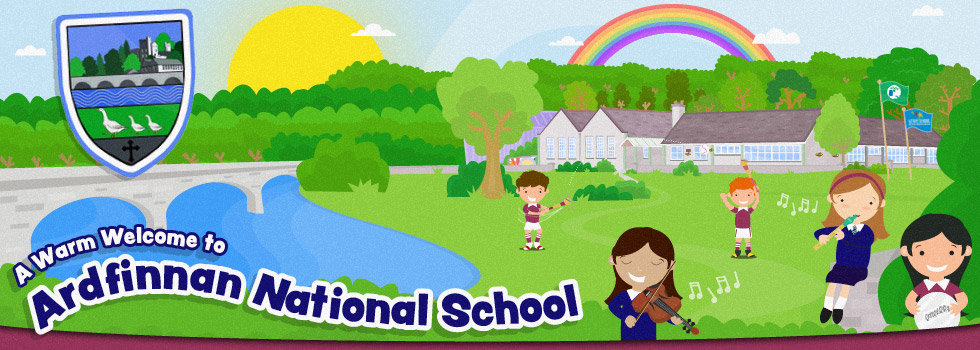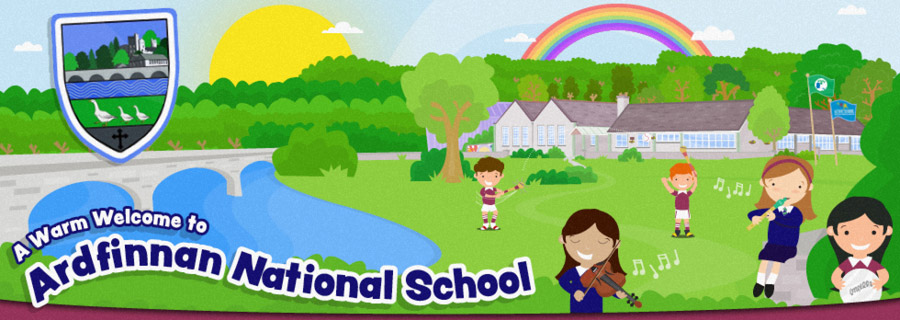History












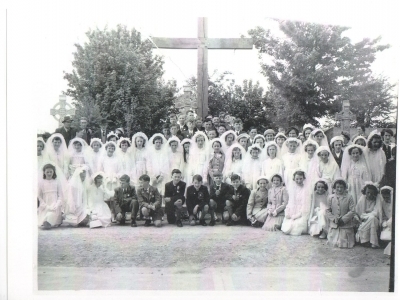
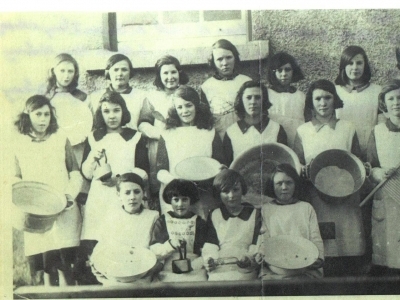
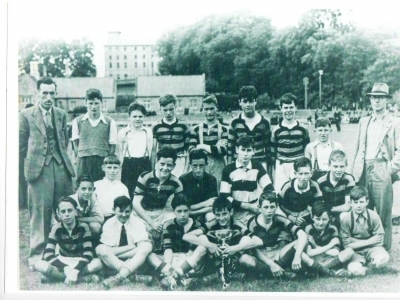
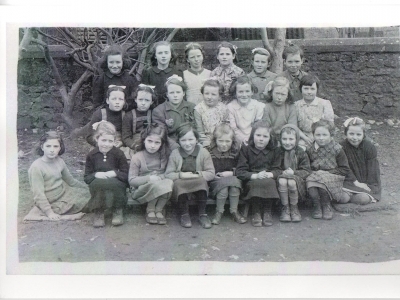
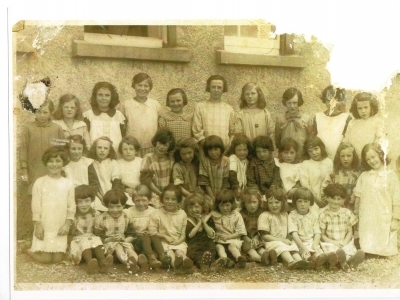
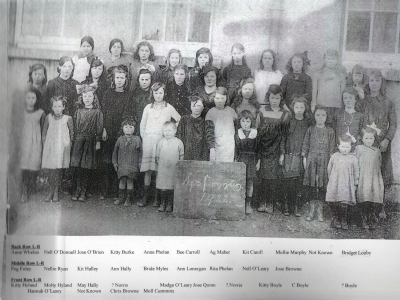
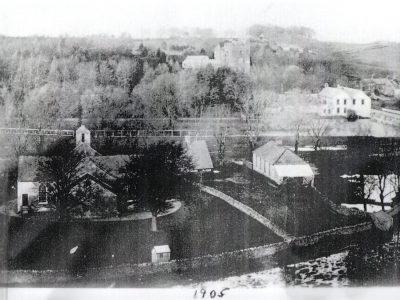
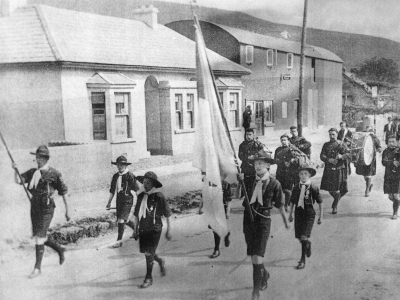
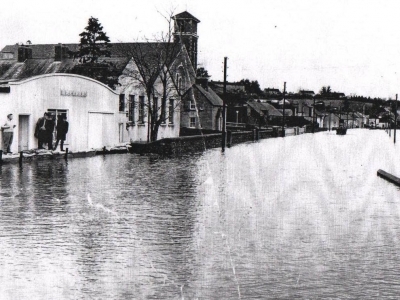
A Brief History Of Primary Education In Ardfinnan- 1824-2013
In 1824 there were 6 ‘pay schools' in the united parish of Ardfinnan, Ballybacon and Grange.... in Kildonogue, Garryroe, Ballybacon, Derrygrath, Rochestown and Ardfinnan.
A school was established by Rev. O'Connor in Ardfinnan in 1850. A new school was built in the Commons, Ardfinnan, in 1856 on the present site.
Crough National school (Goatenbridge) had been built in 1844, while Gormanstown Agricultural Model School was established in 1848.Crough continued to serve the educational needs of that area until June 1st, 1971 when it was amalgamated into Ardfinnan N.S. , subsequent to 4 new rooms being built there. While that major extension was being built classes were held in the Parochial Hall. 18 pupils from Gormanstown School transferred in to Ardfinnan on January 1st 1971.Gormanstown School at that time was mixed , though the plaque outside it says ‘Gormanstown Male School', while the larger building just up the road has a plaque saying ‘Gormanstown Female School.'
The 1856 Ardfinnan school was a poor building and the surviving Inspector's reports from the 1880's onward regularly condemn it's state.In the mid 1870's the Parish priest, Rev. Cantwell attempted to amalgamate the two Schools "...so that the boys may be as well taught as the girls." The Commissioners refused him stating, "A mixed School, having so large a proportion of male pupils cannot have an exclusively female staff."
It would be almost 100 years before merging of the two Schools would happen. On April 1st 1971 Ardfinnan N.S. became a mixed School. It wasn't an easy adjustment for pupils or for staff. There had previously been separate yards, differences in the Curricula, etc. and as was stated - "It was like putting ducks in with geese!"
The 4 classroom extension of 1971, along with the renovation of the 1910 building, was a major improvement. There was now central heating, proper toilet facilities, a Staff room, common purpose room and a tarmacked yard.
The New Curriculum of 1971 and the abolition of the Primary Certificate exams in English, Maths and Irish were positive developments. The abolition of corporal punishment in the 1980s made for a happier, fairer learning environment.
In 1997 an extension of four new classrooms was officially opened.Since then the 1999 Revised Primary School Curriculum was introduced. Ardfinnan N.S. opened an A.S.D. Unit; developed a Sensory Room and Sensory Garden. The school grounds have been greatly enhanced by various environmental projects, school garden, murals and playground markings.
In 2010 we celebrated the Centenary of the 1910 school.In 2013 construction has begun on an extension which will see two new classrooms built.
Curricula in the 19th Century
The Curriculum in the latter half of the 19th Century was varied , even between the Boy's and Girl's schools! The boys had lessons in Arithmetic, Penmanship, Grammar, Dictation, Geography and Agriculture. Religion also was an important subject. At the turn of the century Elementary Science was introduced as well as Book-keeping and Physical Drill (P.E.). Algebra, Geometry and Irish were subjects taught as optional extras after school on certain days.
In the Girl's School the basics were much the same until the pupils reached 5th Class. From then on a strong emphasis was put on what was termed ‘Industrial Instruction'. Subjects such as Needlework (for which there was a special Inspector), Domestic Economy, Sewing Machine, Cookery, Laundry, Dressmaking, Knitting and even Poultry -keeping were taught. With the Internationally famous Mulcahy-Redmond Woollen Mills across the bridge from the school there was no shortage of raw materials! Down the decades the pupils of the Ardfinnan Schools were generally well dressed due to this connection.
Principals through the Years
The first Principal in the Boy's school was Thomas O'Sullivan and in the Girl's School was Alicia Cantwell.
From 1867 to 1877 there were 7 different Principals in the Boy's School ... John Forristal, James Flannery, Michael Dalton, Edward Bryson, Thaddeus Dee , Patrick O ‘ Callaghan and finally Patrick Fitzpatrick.
In 1868 Kate Murphy was appointed Principal of the Girl's School and she was later replaced by Kate Healy in 1870, who remained so for 10 years.
Mrs. Margaret Fitzpatrick, wife of the above Principal of the Boy's School, was appointed Principal of the Girl's School in 1880 and continued so for nearly 35 years.Her husband was Principal until 1914.
After Patrick Fitzpatrick, as Principal in the Boy's School, came William (Bill) Nugent. His assistant over 4 decades was Mary Kate English (nee Grogan).
Meanwhile, in the Girl's School the Principals after Mrs. Fitzpatrick included Ms. Cis Foley (retired in 1949), Ms. Ellen Clifford and from July 1960 until 1969 Mrs. Maureen Finn.
Mr. Nugent's successor was James Teehan and ‘Mr. Teehan' began as Principal in 1944 or thereabouts and continued until 1964.
The next Principal of Ardfinnan Boy's N.S. was Matt O'Sullivan. He remained Principal from 1964 until 2003 during which time Ardfinnan Boy's N.S. and Girls N.S. amalgamated.
After Matt O'Sullivan came Mrs. Mairead Condon who remained in the school for 15 years until 2018.
The current Principal of Ardfinnian National school is Ms. Brid Quinlivan.
In 2010 we celebrated the Centenary of the 1910 partof our School.
Pupils in Ardfinnan National School stepped back in time to celebrate the Centenary of the school. They relived a day from school long ago! Pupils dressed up in period costume. Every boy and girl brought turf or sticks for the fire. The children wrote with chalk and learned poems from 1910. Everybody brought a lunch reminiscent of long ago wrapped in newspaper; milk was brought in jars! The children enjoyed baking bread and scones along with playing games from long ago. The children examined tools and household implements from long ago. It certainly was a day to remember enjoyed by all!
A special mass was celebrated by Bishop Willliam Lee- past pupils; former staff and many friends from near and far gathered in the church. Candles were brought to the altar to represent those that attended the school throughout each decade. The mass was representative of the pupils and staff past and present; Board of Management; Parents Association; parents and grandparents. John Fitzgerald penned a special poem entitled 'The Village School'
Local song writer Stefan Grace penned a song especially for this historic occasion. 'The Song of The Wind'. The School Hall had many displays of old photographs.People took the opportunity to visit all the classrooms and indeed how different they must be since 1910; with interactive whiteboards in every room; laptops; art displayed on all the walls and resources to cater for the needs of every child.
Memories were shared; moments were recalled and hope for the future was discussed. It truly was a great occasion!
Ardfinnan National School, Commons, Clonmel, Co. Tipperary, E91 X6F9, Ireland Phone: 052 746 6397
